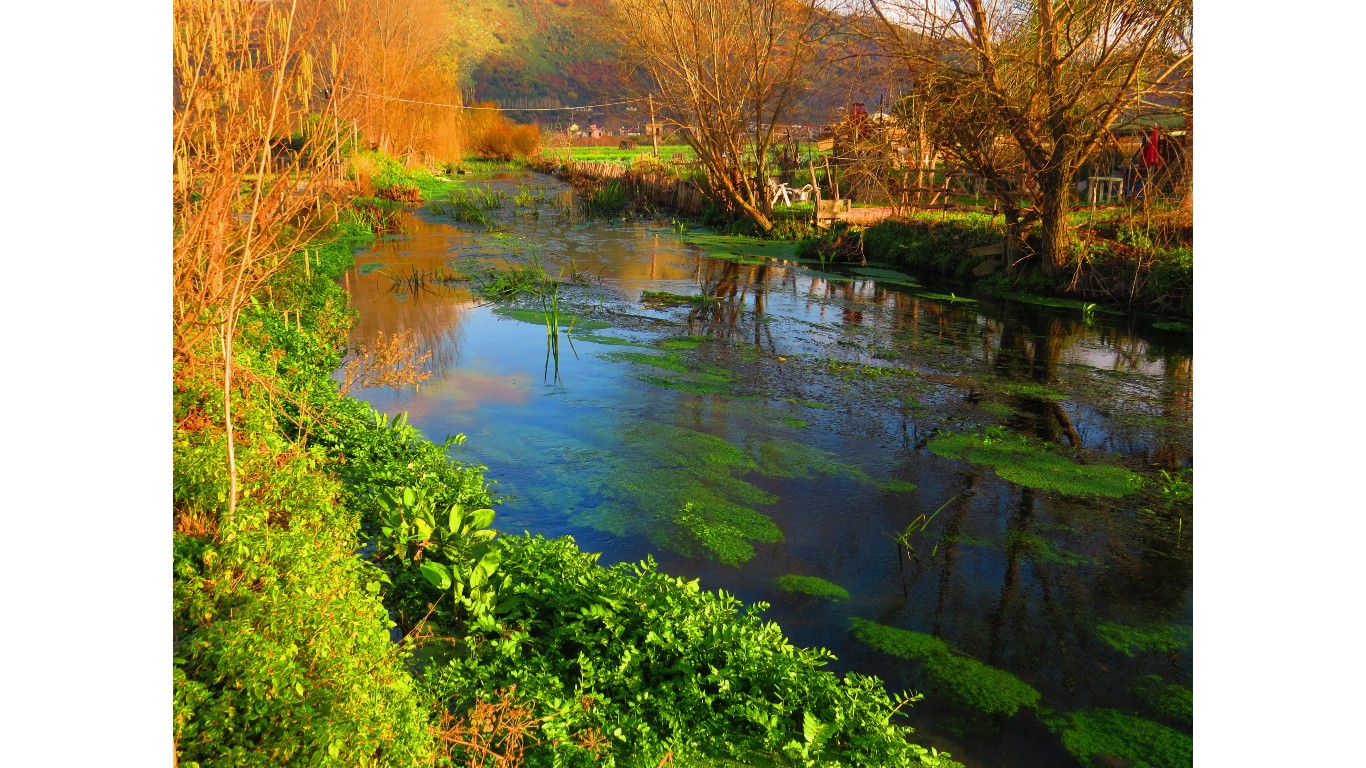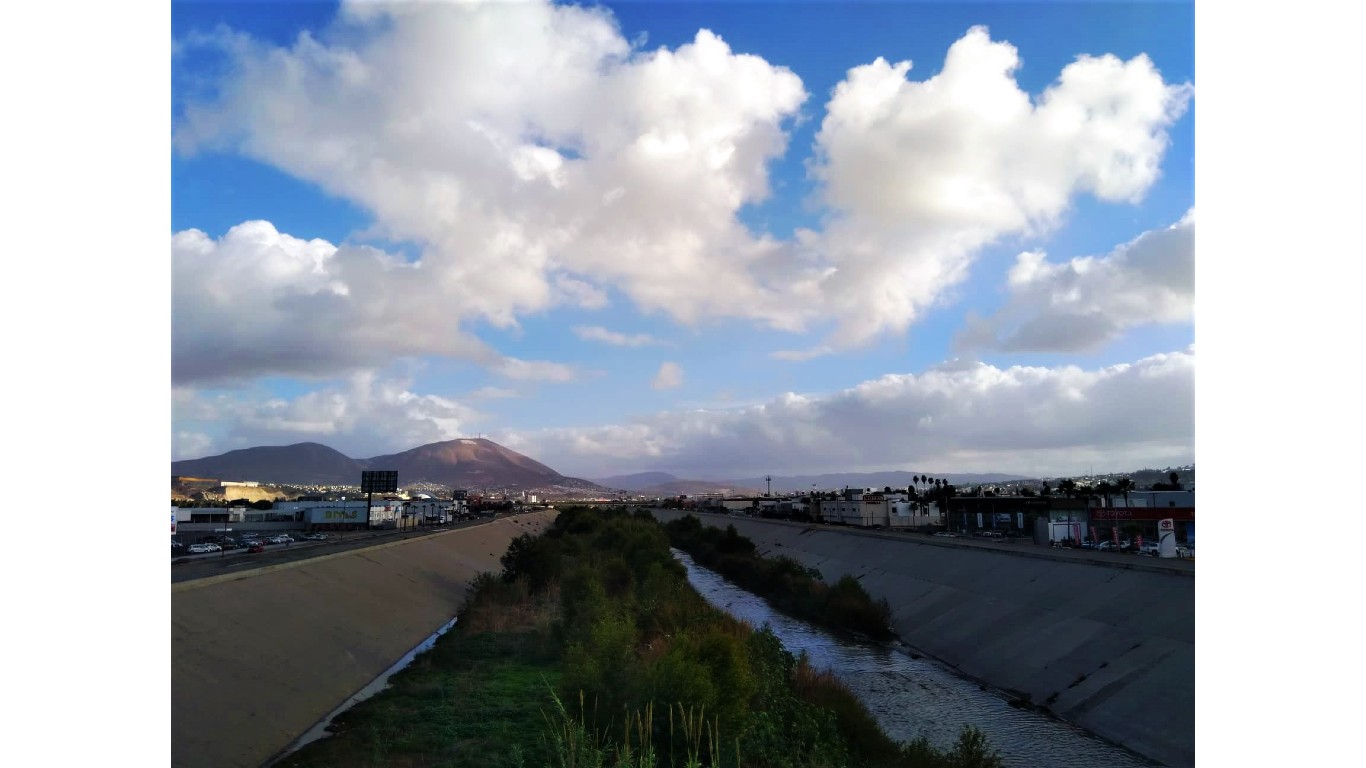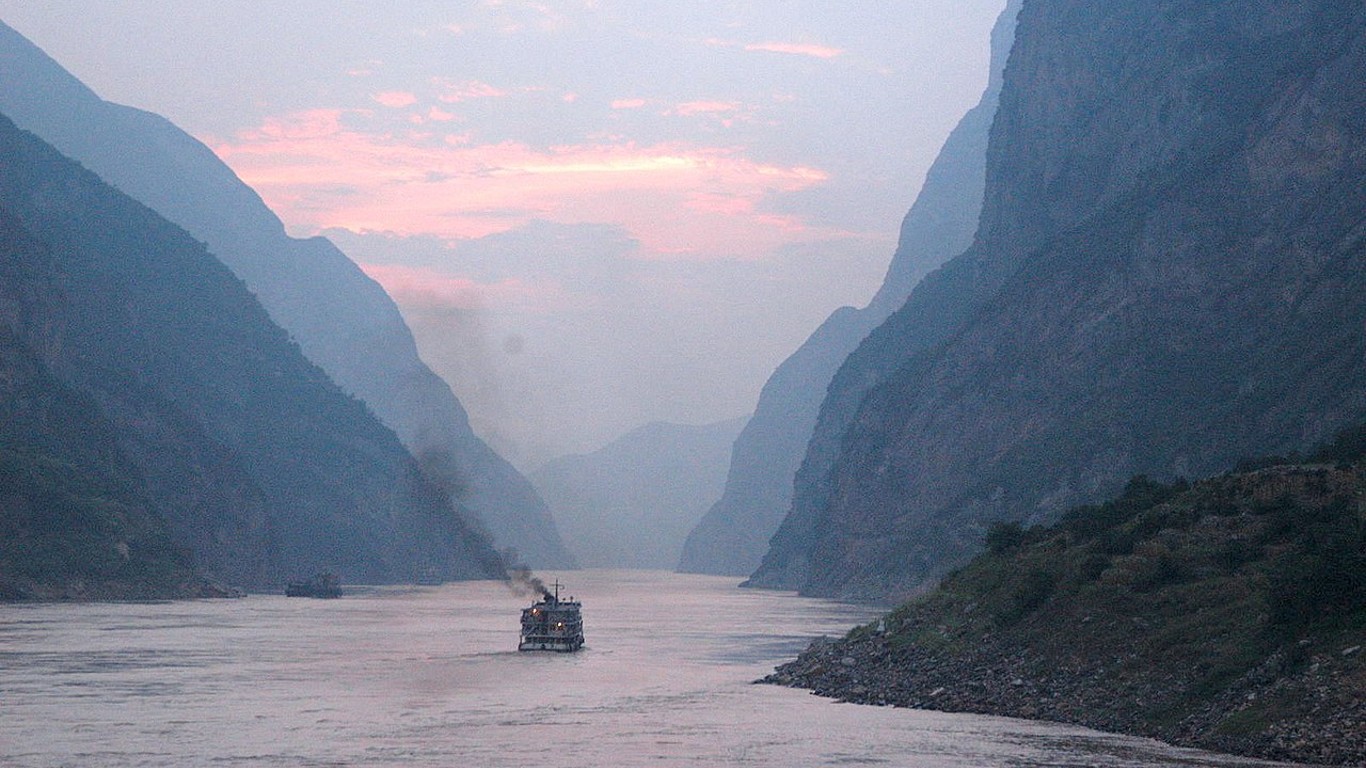
Life as we know it was largely shaped by rivers. Many major ancient civilizations formed along river valleys, relying on seasonal floodwaters to irrigate their crops. Without these rivers, agriculture would not have been possible in these otherwise arid areas. (Floodwaters can also wreak havoc on settlements. Here are countries where the most people have died in natural disasters, including floods.)
Even today, millions of people all over the world depend on rivers as their main source of drinking water, as well as for their food, livelihoods, and industry. Unfortunately, human industry and proximity to rivers has caused devastating pollution in many of these waterways that are crucial not only to humanity, but to whole ecosystems.
Poor waste management systems are a common thread near just about every one of the most polluted rivers in the world, which are found on every continent except Antarctica. To determine the most polluted rivers in the world, 24/7 Wall St. referred to numerous environmental reporting websites and organizations, including Illiminem, Sea Smart, Conserve Energy, Global Citizen, and Active Sustainability. Rivers are listed in no particular order, and the list is not exhaustive. Information about each river is from one of these sources.
Once vibrant and incredibly biodiverse waterways around the globe are now loaded with heavy metals and toxic chemicals as a result of industrial effluent. Agricultural runoff creates algae blooms and contributes to hypoxic dead zones where no life can thrive. Untreated sewage also poses a major risk to rivers and spreads disease. Solid waste, specifically plastic, fills rivers to the brim and eventually reaches the ocean. (These are the companies polluting our water the most.)
Here are the most polluted rivers in the world.

Buriganga River
> Location: Bangladesh
The Buriganga River flows through Bangladesh’s capital city of Dhaka and serves as the main water supply for millions of people. It is one of the world’s most polluted rivers due to industrial effluent, untreated sewage, and household waste. About 5.7 million gallons of liquid containing toxic chemicals and heavy metals from the tanning industry alone enter the water every day, according to Human Rights Watch. Textile dying, printing, and pharmaceutical industries also release waste straight into the river.
[in-text-ad]
Citarum River
> Location: Indonesia
The Citarum River, which flows near Jakarta, contains extensive pollution from industrial wastewater, household sewage, solid waste, and farm runoff. According to the Pulitzer Center, over 2,000 industrial facilities, including 200 textile factories, are situated along the river valley. Toxic waste from these industries have led to incredibly high mercury levels. Many who used to fish on the river have turned to harvesting plastic trash from the river’s surface to recycle, as the fish population has plummeted.
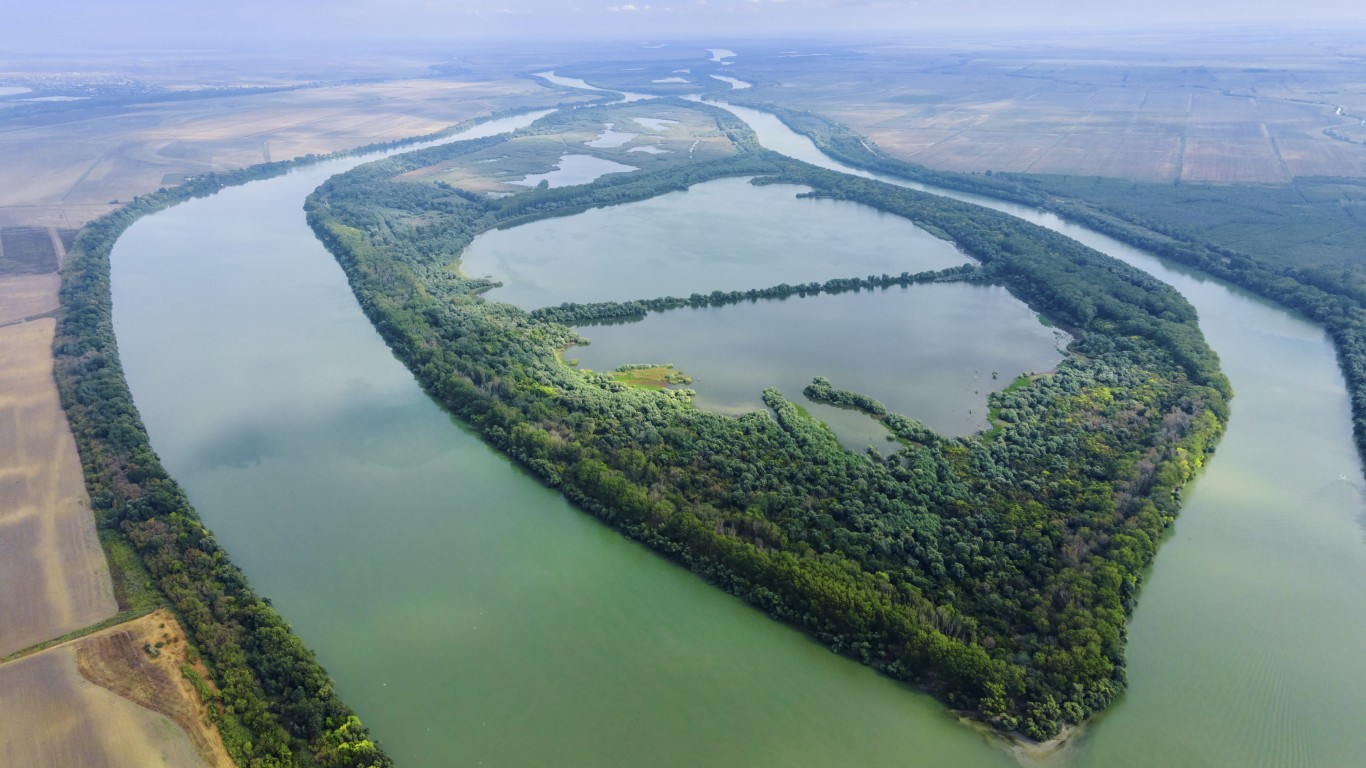
Danube River
> Location: Central and Eastern Europe
Running through 10 countries from Germany to Ukraine, the Danube is Europe’s second longest river. It carries agricultural runoff and pesticides as well as chemical waste, most notably industrial residues from NATO bombing of Serbian factories in 1999. The Danube also has the highest concentration of antibiotics of any river on the continent.
Doce River
> Location: Brazil
Once a main water source for the area’s steelmaking industry, this river in southeastern Brazil suffered an environmental catastrophe in 2015 when an iron mine tailings dam failed, dumping 50 million tons of iron ore sludge into the river. The toxic mud contaminated a 400-mile stretch of the waterway, polluting croplands, spoiling drinking water, and devastating fish and wildlife populations.

Ganges River
> Location: India
The Ganges is a river most sacred to Hindus and one that millions of people rely on as a main water source. It absorbs over 1 billion gallons of waste each day, with 75% being raw sewage and household waste and the rest being toxic industrial runoff. Coliform counts in the river due to human fecal matter are over 100 times the legal limit in certain areas, and floating debris make certain stretches of the river unrecognizable.
Indus River
> Location: Pakistan
An important water source in Pakistan and parts of India, specifically for crop irrigation, high amounts of pollutants from agricultural runoff, factories, and untreated sewage flow into the Indus. But the most striking pollutant is the plastic. The Indus River dumps over 180,000 tons of plastic waste into the ocean annually — the second highest amount after the Yangtze River in China, according to a 2017 report published in Environmental Science and Technology.
Jordan River
> Location: Israel
The Jordan River in Israel, spanning over 150 miles, is a holy river to Christian pilgrims, who visit and bathe in the waters where Jesus is believed to have been baptized. Unfortunately, the lower Jordan is heavily polluted from unchecked waste disposal, including raw sewage, agricultural runoff, groundwater seepage, and saline water contamination.
La Plata River
> Location: Argentina and Uruguay
The La Plata River is a muddy estuary of two large rivers that forms the border between Argentina and Uruguay, spanning the area between both countries’ capital cities. There are over 4,000 industries, including petrochemical manufacturers and tanneries, along the middle and lower reaches of the waterway, many of which dump untreated waste into the La Plata, according to Le Monde.
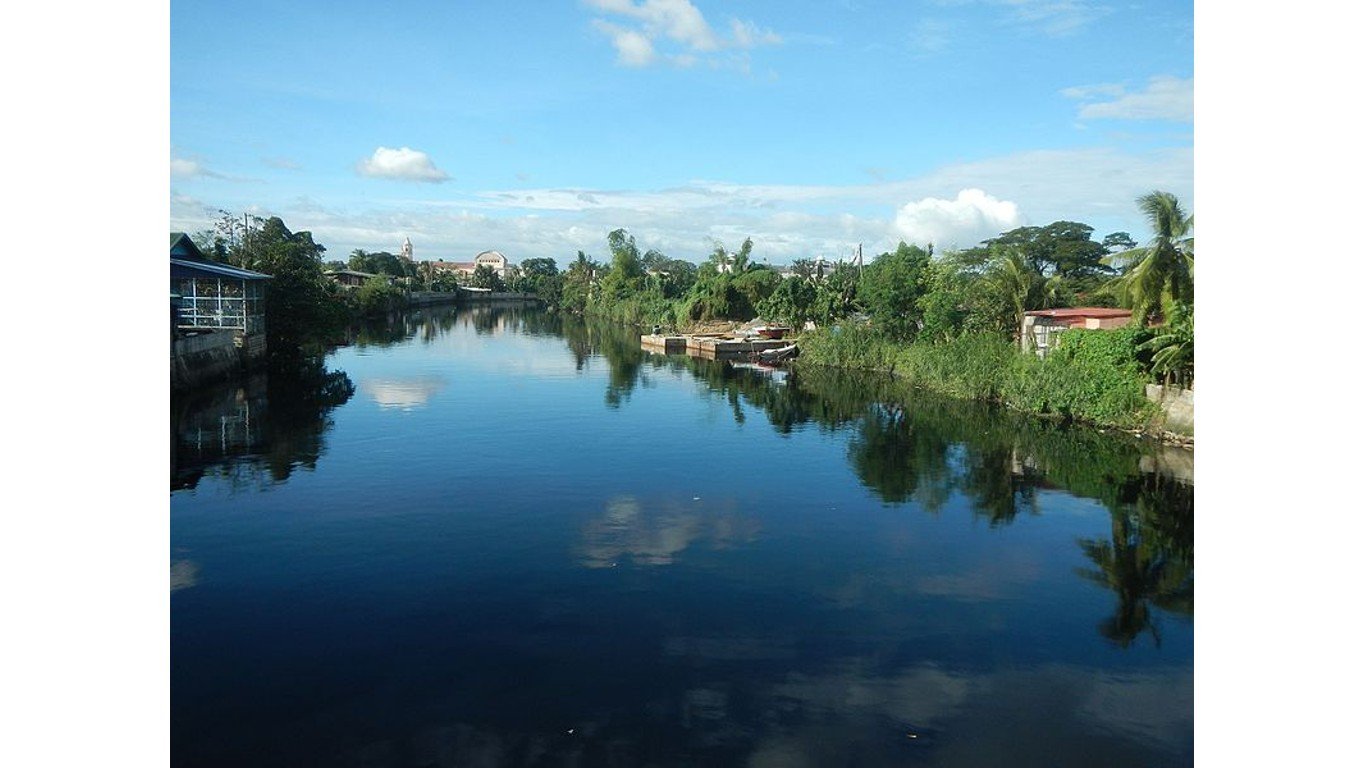
Marilao River
> Location: Philippines
The Marilao River flows through a metropolitan area north of Manila and provides drinking and irrigation water to millions of Filipinos. The river is considered biologically dead and is heavily polluted due to industrial waste, particularly from electronics and textile manufacturing. It also contains a layer of solid waste, including plastic trash and dead animals, that leaves the water barely visible in some areas.
Matanza-Riachuelo River
> Location: Argentina
Often cited as the most polluted river in South America, the Matanza-Riachuelo River is infiltrated with industrial effluent, untreated sewage, and slaughterhouse waste. This pollution introduces high levels of toxic chemicals, heavy metals, and organic pollutants into the river, threatening the health of the populations who live along its banks.
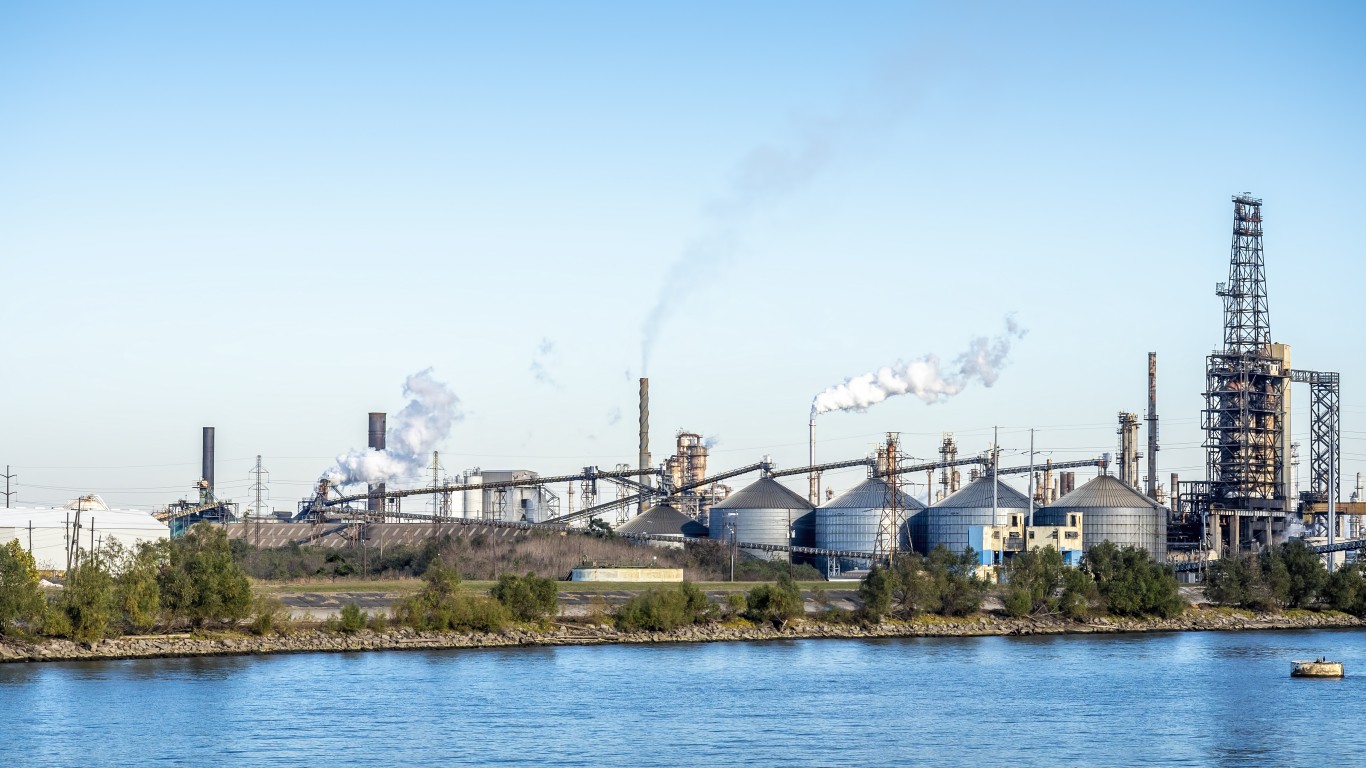
Mississippi River
> Location: United States
Running from Minnesota to the Gulf of Mexico, the Mississippi is polluted largely due to agricultural runoff of nitrogen-based fertilizers and herbicides as well as industrial discharge and urban sewage. The excess nutrients in the fertilizers cause ecosystem imbalances that harm marine life in the Gulf, where the river’s waters have caused a large dead zone.
Murray-Darling River
> Location: Australia
This river in southeastern Australia has had numerous water quality issues in the past decades, including extensive blue-green algae blooms, hypoxic blackwater events, and mass fish deaths. Agricultural runoff is a major culprit, as are saline and sediment pollution, which increase as a result of human activities such as land clearing that cause erosion and rising groundwater levels.
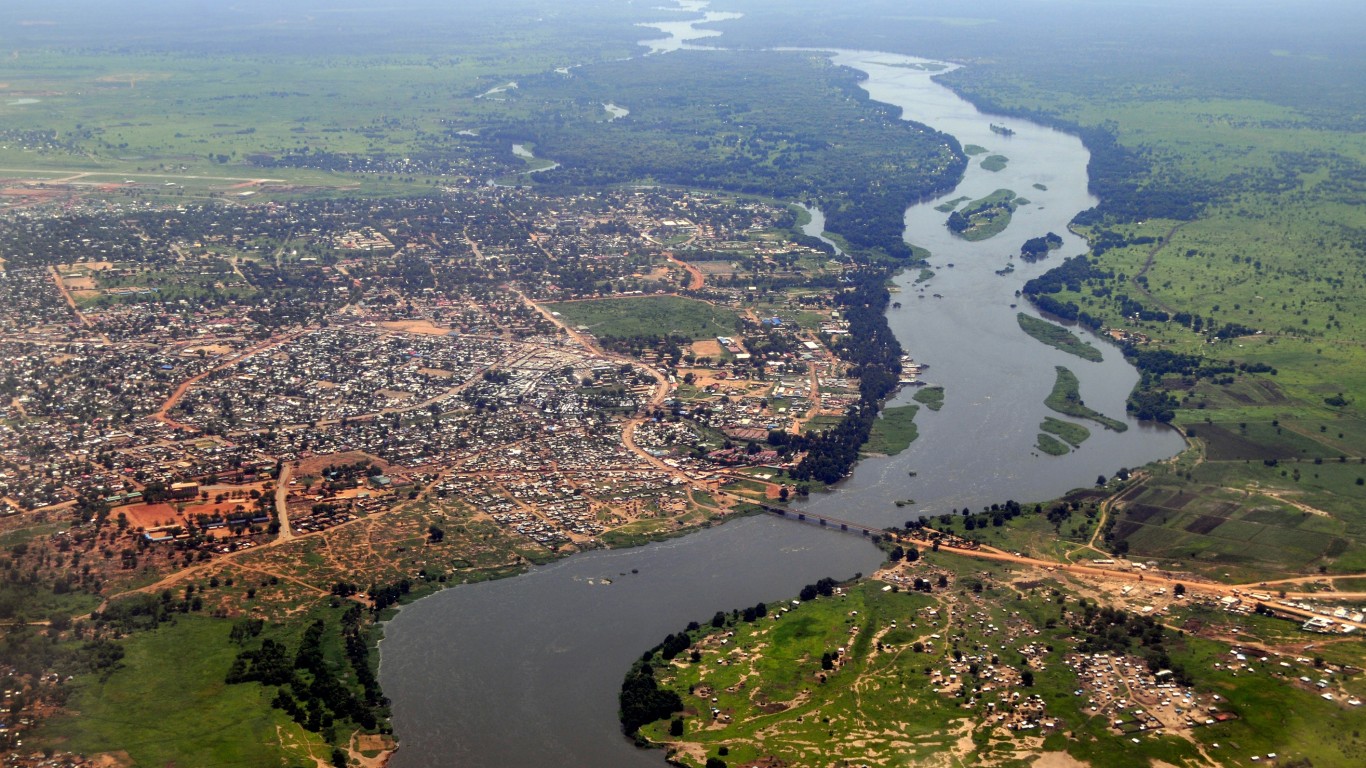
Nile River
> Location: Egypt
Over 280 million people in 11 countries rely on the Nile River, according to the Wilson Center. Like many of the most polluted rivers, the Nile is inundated with untreated wastewater, industrial effluent, and agricultural runoff. Over 165 million tons of industrial waste is dumped into the river annually. The sediment on the riverbottom is known to contain high levels of heavy metals, including cadmium and lead.
Pasig River
> Location: Philippines
The Pasig River, located in the Philippine capital of Manila, is heavily polluted due to industrial runoff and solid waste. It has become a dumping ground for raw sewage and household garbage as the population in the surrounding area has skyrocketed and municipal facilities failed to keep up with disposal. The river is so polluted that it has been declared biologically dead.

Passaic River
> Location: United States
The lower Passaic in New Jersey, a 17 mile stretch that dumps into Newark Bay, carries a century’s worth of industrial pollution from manufacturing. PCBs, mercury, and dioxin pollute the river’s sediments, and sewage spillover from flooding has heightened the levels of disease-causing organisms.
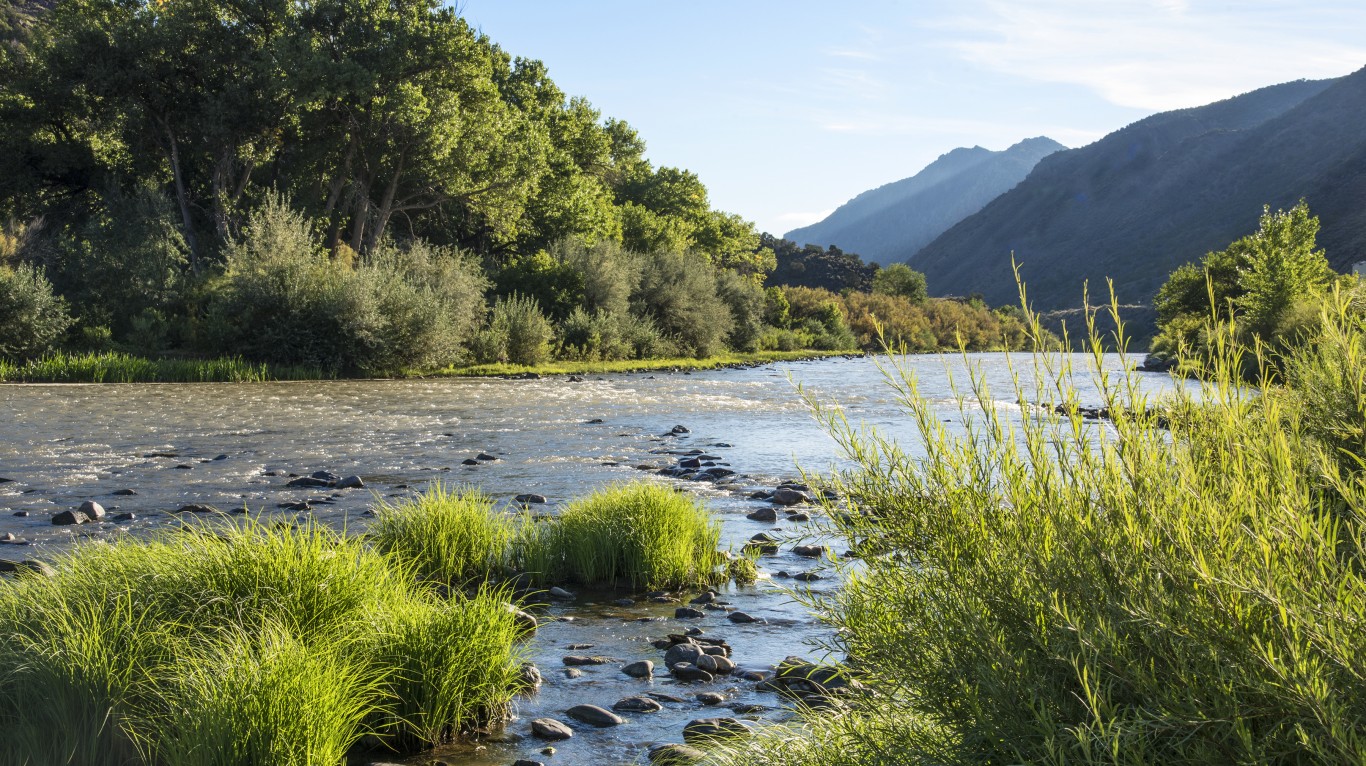
Rio Grande
> Location: United States, Mexico
This river between Texas and Mexico provides water to many desert communities. Unfortunately, the water is contaminated not only with industrial waste, but also raw sewage. Millions of gallons of untreated wastewater enter the Rio Grande daily, and E. Coli levels are thousands and sometimes millions of times higher than federal standards would allow for recreational activities such as swimming and fishing.

Salween River
> Location: China, Myanmar
The Salween River, which flows through Southeast Asia, is home to the most diverse population of turtles in the world. About 6 million people rely on the waterway for their food and livelihood. Unfortunately, the water is heavily polluted due to effluent from textile factories. Industrial waste has led to high levels of sulfur, cadmium, copper, lead, mercury, and zinc in the river.
Sarno River
> Location: Italy
Although the headwaters of this river are clean, as it runs south of Naples, it is subject to the unchecked dumping of industrial and agricultural waste. Frequent flooding carries this pollution into the nearby countryside, and the accumulation of trash and toxins make swimming in the sea at the mouth of the river impossible.
Tijuana River
> Location: Mexico, United States
Flowing through northwestern Mexico and ending just over the U.S. border in Southern California, the Tijuana River carries untreated sewage from inadequate infrastructure in Tijuana and toxic waste into the Pacific Ocean, threatening swimmers and wildlife. Tires and plastic also foul the river waters and end up in the ocean, causing frequent beach closures and impacting fisheries.
[in-text-ad-2]
Yamuna River
> Location: India
The Yamuna River, which flows through India’s capital, is severely polluted due to various factors. Over 80% of the wastewater from Delhi households, including laundry water, is released largely untreated, according to the United Nations. This leaves mounds of toxic foam floating on the river. Industrial waste, pesticides, and untreated sewage also enter the river through Delhi’s drainage system.
Yangtze River
> Location: China
The longest river in Asia is also the world’s top source of plastic waste in the oceans, contributing about 55% of all ocean plastics, according to a 2017 study published in Environmental Science and Technology. The river also contributes to a dead zone in the East China Sea. In addition to solid waste pollution, the river carries wastewater from hundreds of chemical plants, agricultural runoff, sewage from ships, and effluent from oil refineries and steel mills.
Yellow River
> Location: China
The Yellow River in China, the country’s second longest river, is extensively polluted due to waste from industries including coal mining as well as agricultural runoff and sewage. The river provides water to many population centers, but much of the water is unsafe for drinking or agricultural uses and is known to contribute to cancer, waterborne diseases, and birth defects.
Get Ready To Retire (Sponsored)
Start by taking a quick retirement quiz from SmartAsset that will match you with up to 3 financial advisors that serve your area and beyond in 5 minutes, or less.
Each advisor has been vetted by SmartAsset and is held to a fiduciary standard to act in your best interests.
Here’s how it works:
1. Answer SmartAsset advisor match quiz
2. Review your pre-screened matches at your leisure. Check out the advisors’ profiles.
3. Speak with advisors at no cost to you. Have an introductory call on the phone or introduction in person and choose whom to work with in the future
Thank you for reading! Have some feedback for us?
Contact the 24/7 Wall St. editorial team.

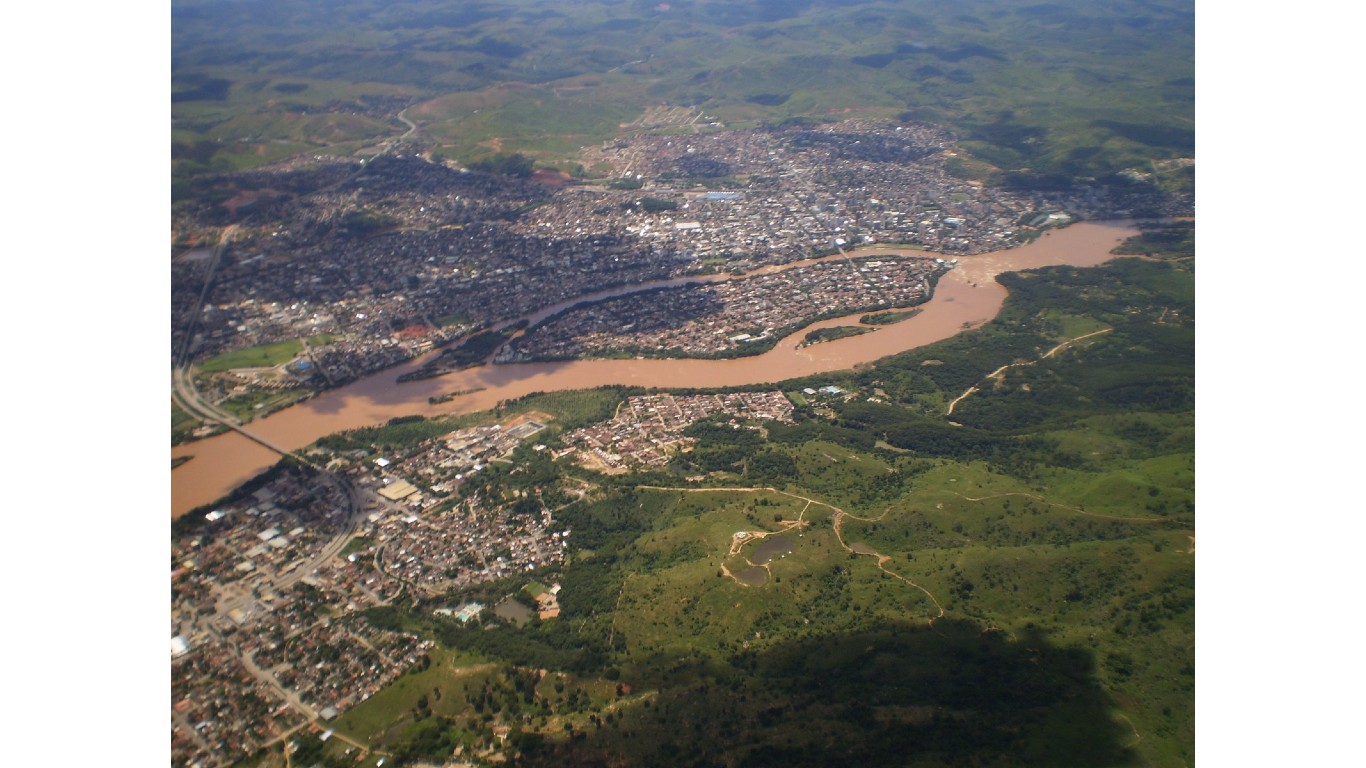
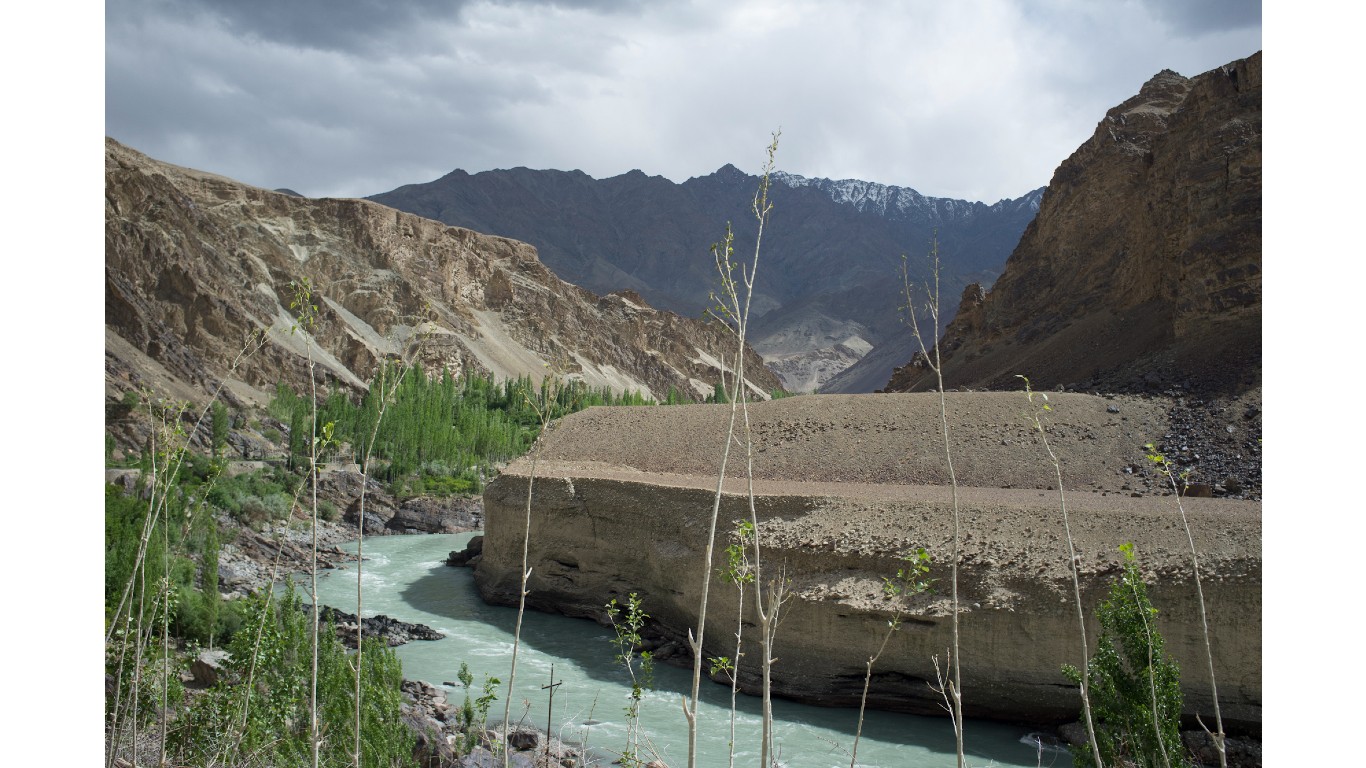

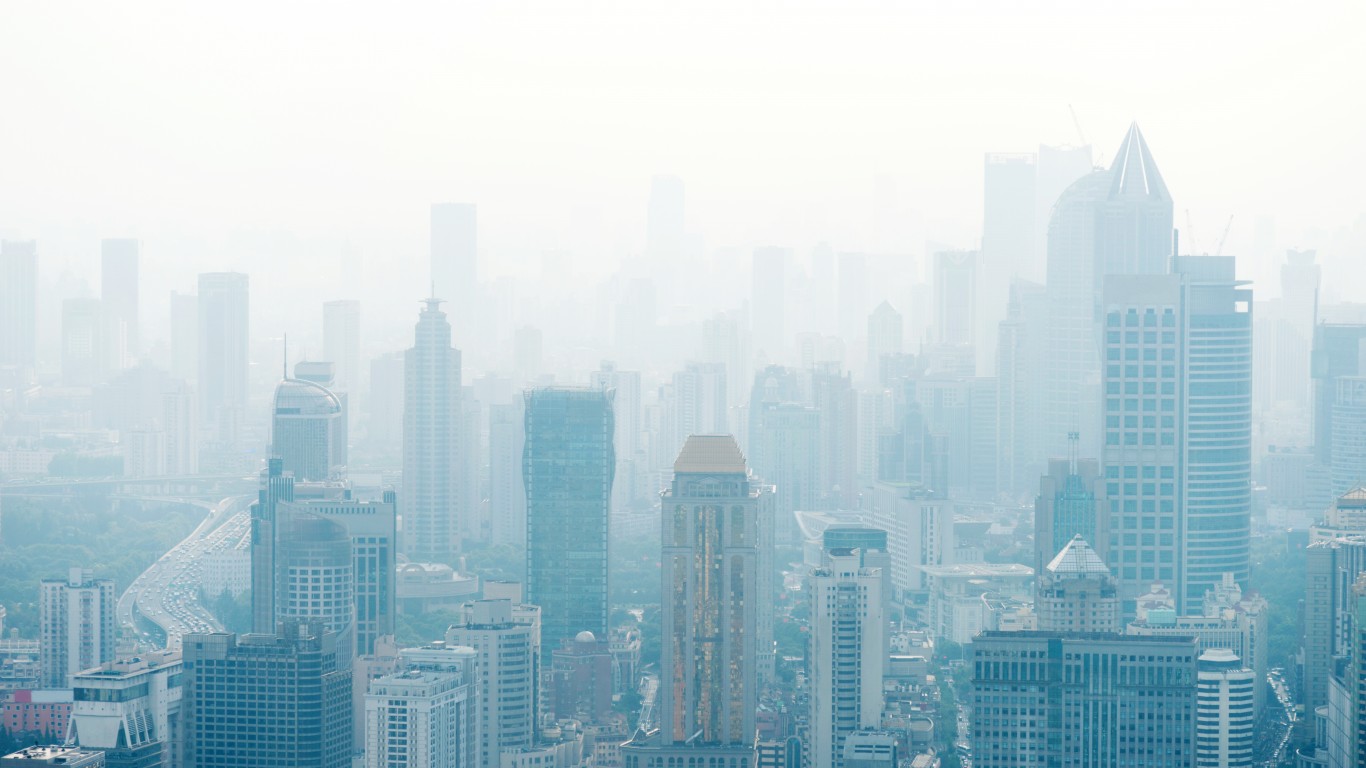 24/7 Wall St.
24/7 Wall St.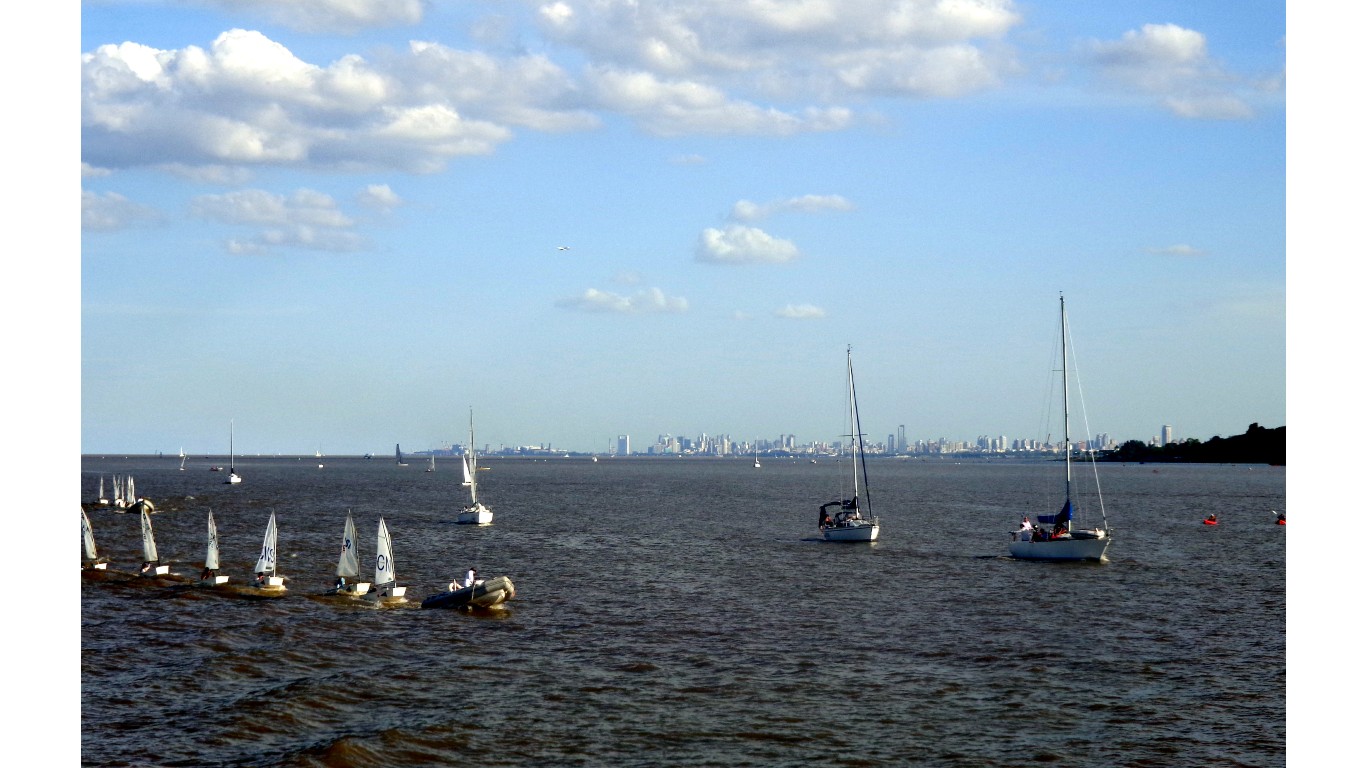

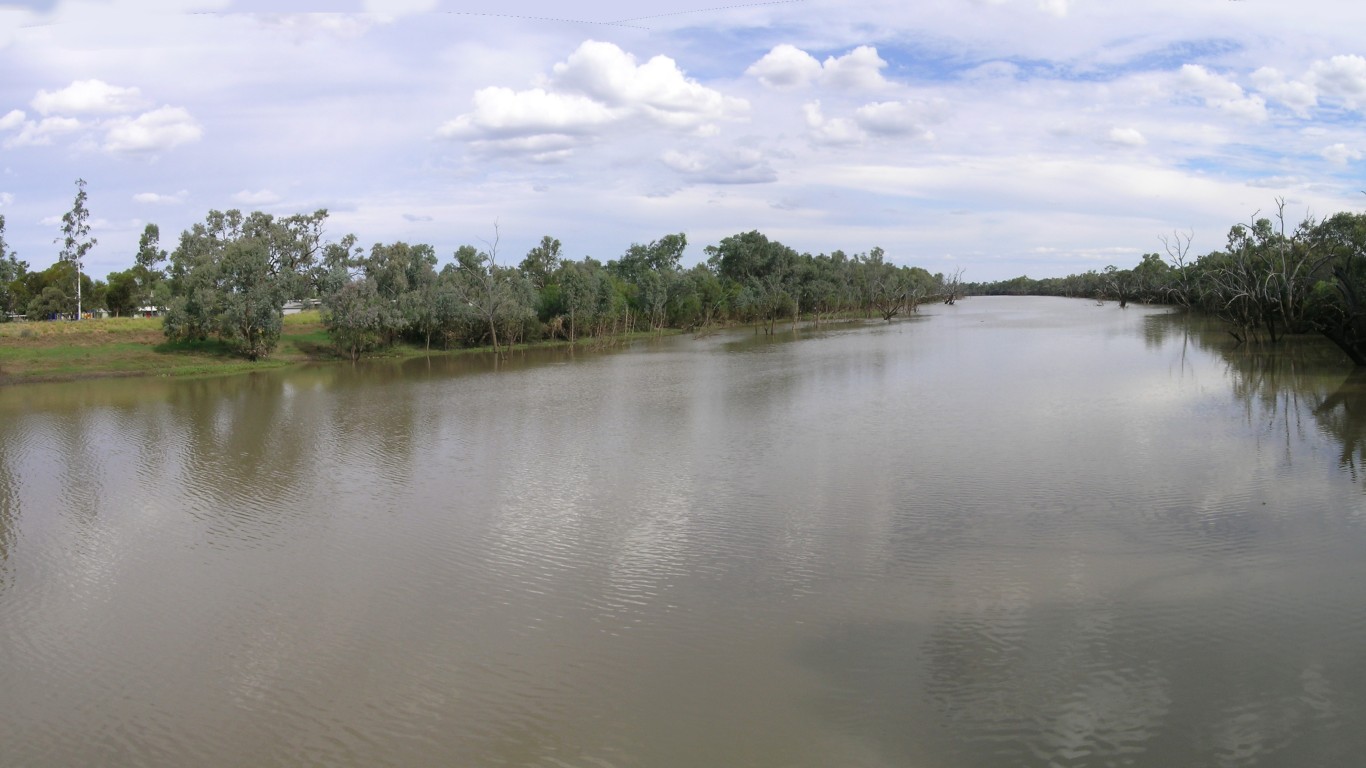
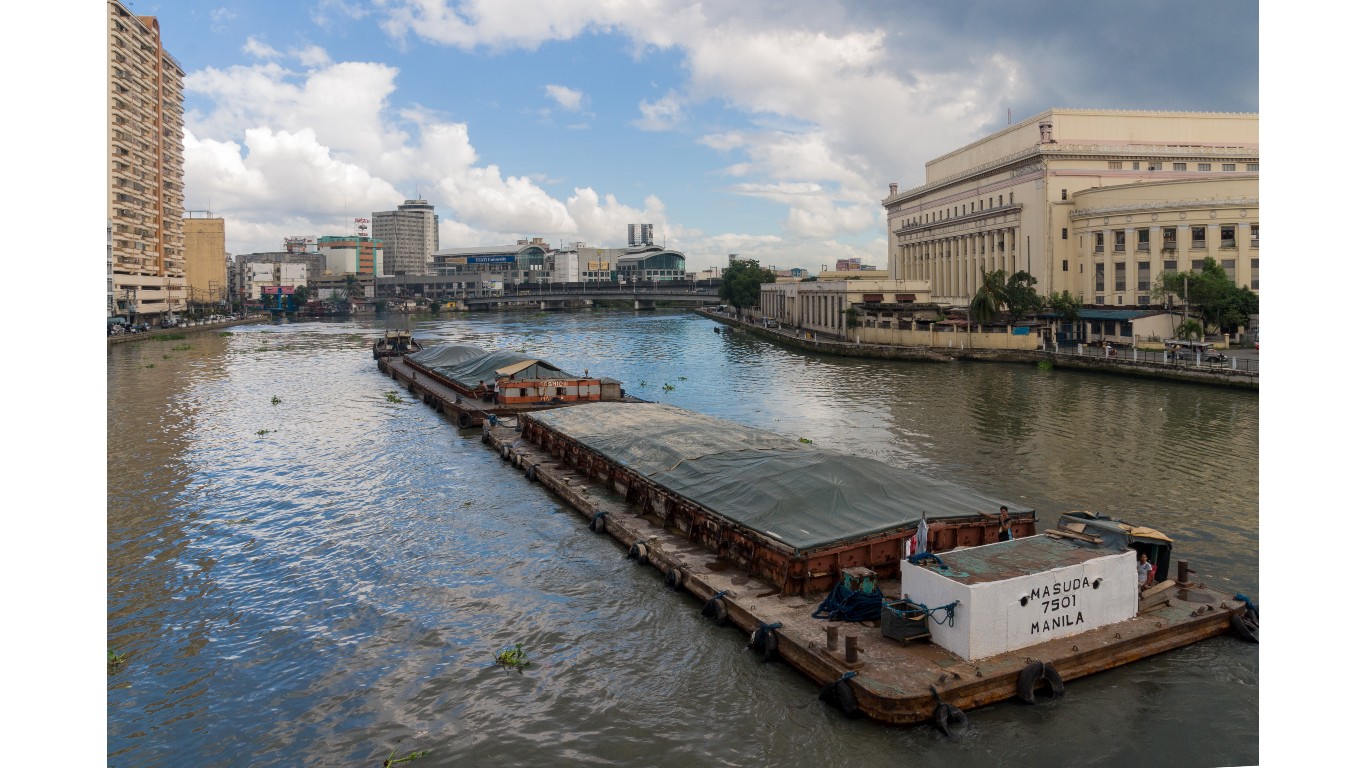
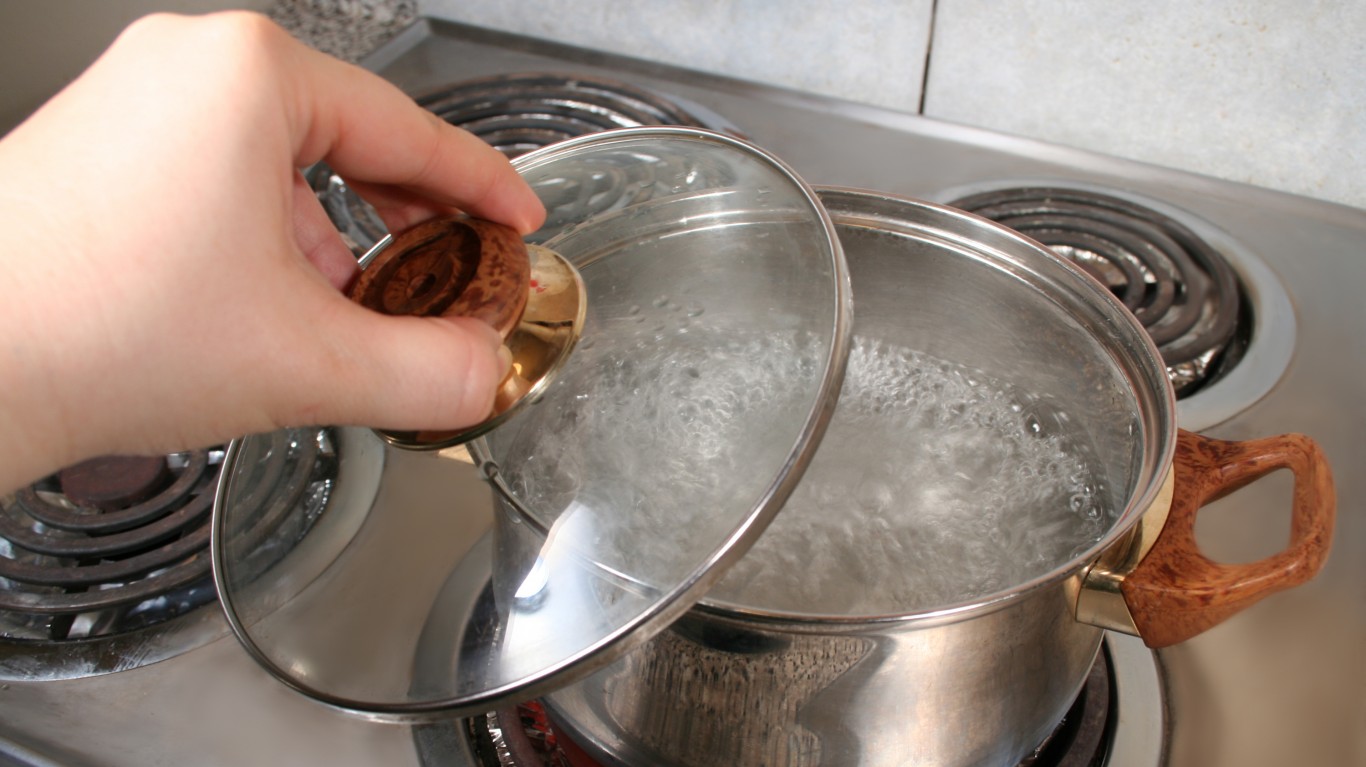 24/7 Wall St.
24/7 Wall St.